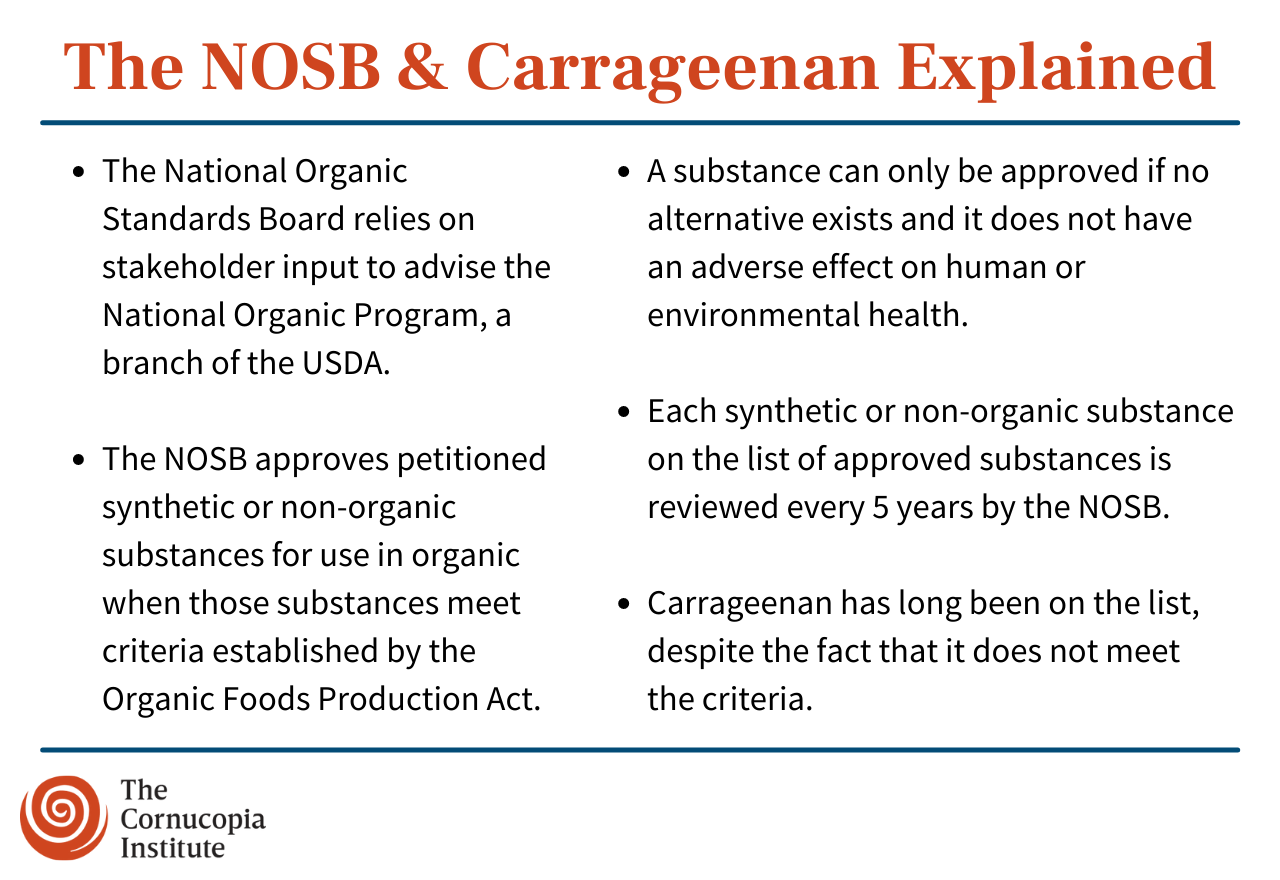
Carrageenan predictably causes inflammation in thousands of cell-based and animal experiments, yet it remains allowed in organic food. Why? The history of carrageenan in organic food is a story of industry influence and illustrates the political limitations of the National Organic Standards Board (NOSB).
The Cornucopia Institute has been tracking research and working with scientists to study the inflammatory effects of carrageenan for more than nine years. Though the Food and Drug Administration considers carrageenan a “Generally Regarded as Safe” (GRAS) food additive, research on human health effects paints a different picture.
Initial studies (prior to 2017) found that food-grade carrageenan induced or worsened inflammation, contributing to ulcerative colitis-like disease in laboratory animals (guinea pigs) and higher rates of tumors in rats.
According to research involving humans, carrageenan causes an inflammatory response in many individuals. Sensitive populations (like those with colitis or IBD) are especially susceptible. (For the current research on human health effects, read What Research Says About Carrageenan.) Considering this health data and that organic food must meet a higher standard for human health than conventional food, it is a surprise that carrageenan is allowed in organic food.
A Regulatory Battle to Remove Carrageenan from Organics
The Organic Foods Production Act of 1990 requires that prohibited materials may be added to the “National List” only if the use of such substances would not be harmful to human or environmental health, and only if it is considered essential because no alternatives exist.
Every five years such substances “sunset,” meaning they are re-reviewed by the National Organic Standards Board. (Read Cornucopia’s reporting on NOSB meetings to learn more about this advisory board.) The NOSB then recommends actions to the National Organic Program (NOP), a program of the USDA, which can take regulatory actions based on those recommendations, its own analysis, and public comment.
Carrageenan was first added to the National List in the 1990s, right around the time the organic standards were being developed and the organic label was in its infancy. The NOSB relies on technical reviews by scientists to determine the safety of any materials that are petitioned for use in organics. At that time, the scientific review of carrageenan was conducted by Ralston Purina/Beech Nut executive, Dr. Richard Theuer, and two other agribusiness-related food scientists. They did not emphasize its known impacts on human health or the environment (the NOSB has questioned the impact of seaweed farming on the environment), noting that carrageenan had been widely used in conventional food for decades.
Yet research showing harmful biological effects in human cells and in animals exposed to carrageenan began to mount. Dr. Joanne K. Tobacman of the University of Illinois – Chicago made oral comments at the spring 2012 NOSB meeting, detailing the findings of her own work. Following that meeting, the NOSB recommended that carrageenan be re-listed as an allowed substance. However, perhaps due in part to the compelling testimony of Dr. Tobacman, the NOSB recommended excluding carrageenan from organic infant formula, citing safety concerns. The NOP rejected this recommendation.
Responding to increasing pressure from Cornucopia — including a petition with over 40,000 signatures — and other stakeholders, the NOSB recommended removing carrageenan from the National List entirely in 2016, citing its reasoning that alternatives exist in the marketplace. The NOSB also noted that public comments reported anecdotal evidence of problems with carrageenan and that: “[t]his was not seen as a primary reason to remove carrageenan since it is listed on the labels as a food ingredient.” It appears that the then-members of the NOSB did not understand that carrageenan can be used as a processing aid, meaning it can be legally omitted from the ingredient panel.
The USDA did not follow the NOSB’s recommendation for the 2018 “sunset,” stating that “[we] found sufficient evidence in public comments to the NOSB that carrageenan continues to be necessary for handling agricultural products because of the unavailability of wholly natural substitutes.” [Emphasis added.]
This statement is particularly bothersome because the NOSB would likely have recommended reclassifying carrageenan as “synthetic” in 2016, had it not asked instead for the substance’s removal from the National List. The fall 2016 NOSB meeting transcript captured this discussion fully, and it is clear that the Board did not view carrageenan as “wholly natural.”
Update: News from fall 2021 NOSB
In a discouraging vote, the NOSB decided to keep carrageenan on the list of substances allowed in organic food for another five years, despite the additive’s known health impacts and the inability of consumers to identify or avoid it in organic food (since it need not always appear on labels).
Considering the overwhelming evidence of carrageenan’s negative health impacts, several NOSB members either did not read or ignored the substantive public comments written by The Cornucopia Institute, National Organic Coalition, and Beyond Pesticides. Despite the large and growing body of research on carrageenan, the NOSB also did not request an updated Technical Review (TR). The most recent TR was limited in scope to focus only on human health impacts and was published in 2016. Many studies on human health impacts have been published since then. None of them were considered.
“That zombie TR rises again and again despite more recent research showing that carrageenan makes people sick,” says Melody Morrell, Executive Director of Cornucopia Institute. “The NOSB decision completely disregarded the current science.”
Three oral commenters with vested interests told the NOSB carrageenan is safe. A few claimed research to the contrary has been debunked, providing no evidence. But they spoke with authority, and the questions they fielded from the Board could be described as softballs.
The NOSB did not reclassify carrageenan as synthetic — they never even raised the issue, although carrageenan would have been reclassified as such in 2016 if then-NOSB members had not voted to remove it from use. It does not meet the bar for non-synthetic materials, as it is now classified, due to its modern processing.
The failure of process extends to the NOP as well. In the fall 2021 vote, Five NOSB members voted to relist carrageenan and nine voted to remove it from use. A two-thirds majority was previously required to keep items on the National List, but that same super-majority is now required to remove items from the list. Prior to 2013, when the NOP opted to turn the sunset review process on its head, this vote would have been sufficient to remove carrageenan from the National List.
Carrageenan is up for review again in 2026. (Its sunset date is in 2028, but producers and handlers have two years from the potential de-listing of any substance to employ a suitable replacement.)

